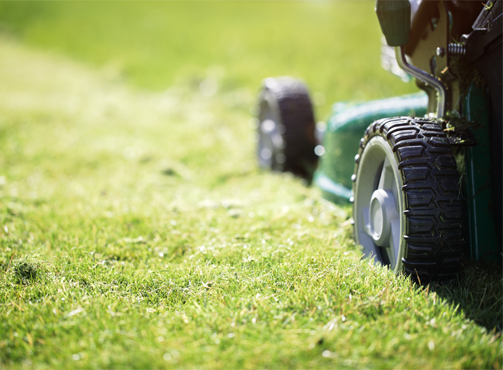
Like a snowflake or a thumbprint, every lawn is unique. Okay, maybe not that unique. But every lawn certainly needs individualized care. And while routinely cutting your grass every 4-7 days is standard practice, there are factors to take into consideration before you start hacking away at your beautiful yard.
Get to Know Your Grass
If you thought that all grass was the same, we have some news for you – it’s not. To maintain healthy grass, and get the timing right, you have to know the different classes. There are at least nine common types, including hybrid bermuda, common bermuda, centipede grass (aka nightmare grass), fine fescue, Kentucky bluegrass, rye grass, Augustine, tall fescue, and zoysia grass. Each individual type requires specialized care, so take a look at our grass guide and study up.
Don’t Scalp It
Measure your grass. Length is essential in choosing when to cut. Every lawn grows at a different pace and if yours grows a bit slower, it’s okay to mow the lawn a little less frequently. And in the summer, especially in warmer climates, you can let it grow longer – shorter grass results in scorched earth. Three inches is a perfect height for most types of grass. Anything over that and it might be time for a trim. Just remember to only remove one-third of the length at once. Otherwise, you might be forced to apply Rogaine to the barren wasteland you’ve left behind. (Note: please don’t apply Rogaine to your lawn.)
Get Your Seasons Straight
When it comes to seasonal lawn care, some seasons are better than others. During the spring and summer seasons, grass grows in abundance, therefore you should be mowing quite frequently. Whereas in the fall and winter, your lawn may decide to grow slowly or not at all. So, during these cold months, you may not need to mow nearly as much. The Dalai Lama once said, “There is a season for everything, including mowing.” Or was that Steve from accounting?
Like a Martini
Grass is better dry. One essential rule of lawn maintenance is to never mow wet grass. After it rains, or you put on the sprinklers, or have a water balloon fight, the grass gets weighed down and clumps up – which causes uneven cutting. Also, overwatering inflicts damage on certain types of grass, especially fescue, and can really damage your lawn. This means you need to sync up your lawn maintenance schedule with the weather. Now, if you live somewhere like Portland or Seattle, mow away, there’s no helping you.
Leave It to The Pros
While there is no one-size-fits-all answer for the best time to mow your lawn, there are many factors that can be weighed to determine the best lawn maintenance schedule for your yard. It’s an art! And it takes a lot of preparation and thoughtful execution to get your lawn looking like the one at Buckingham Palace. So, if you have any questions, we’re happy to walk you through the process. Or just do everything for you. Contact us either way.
